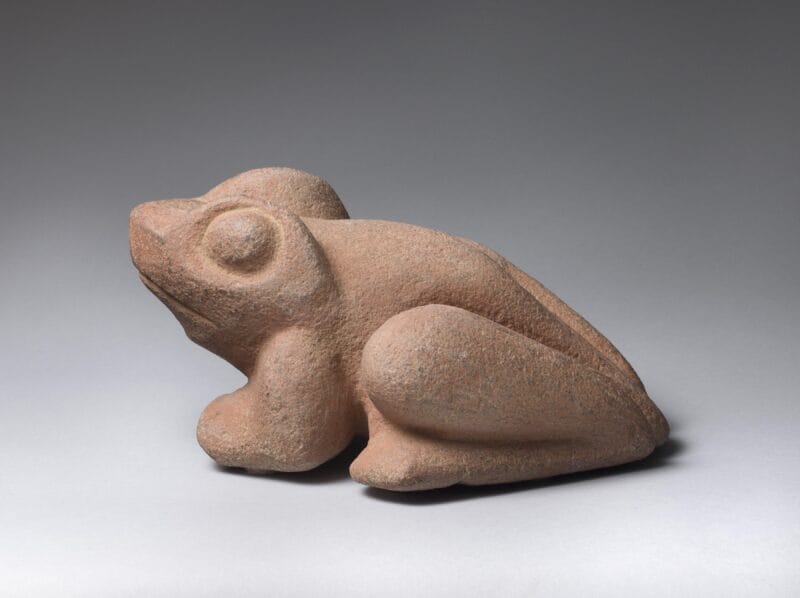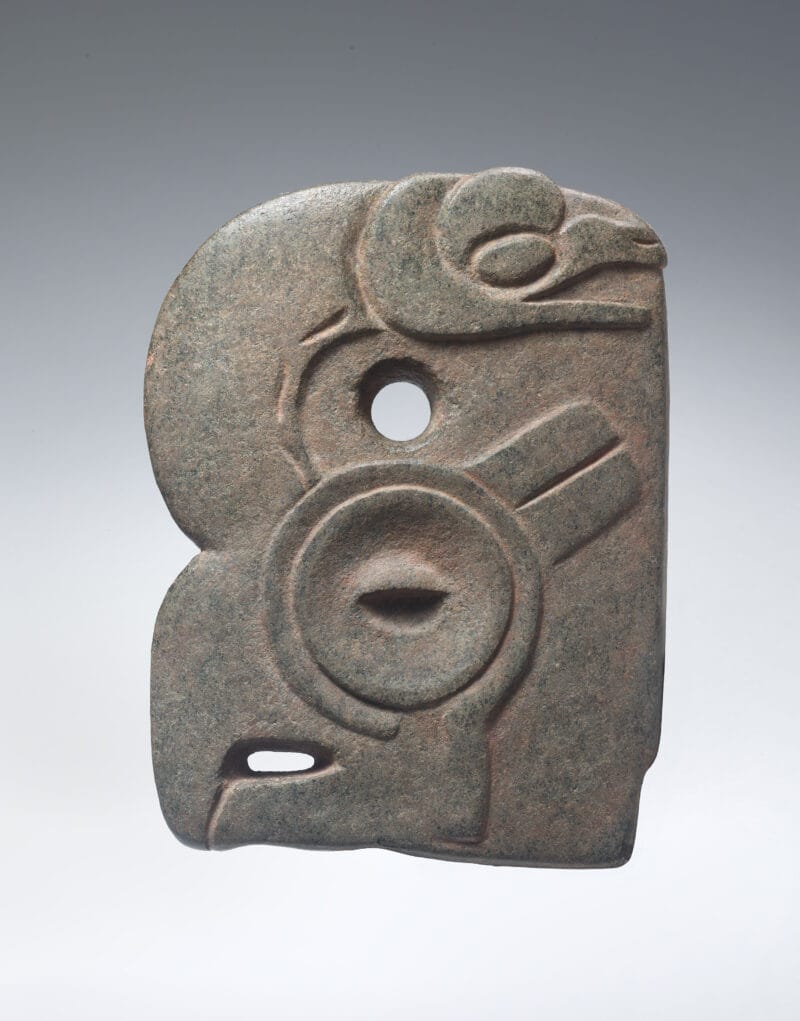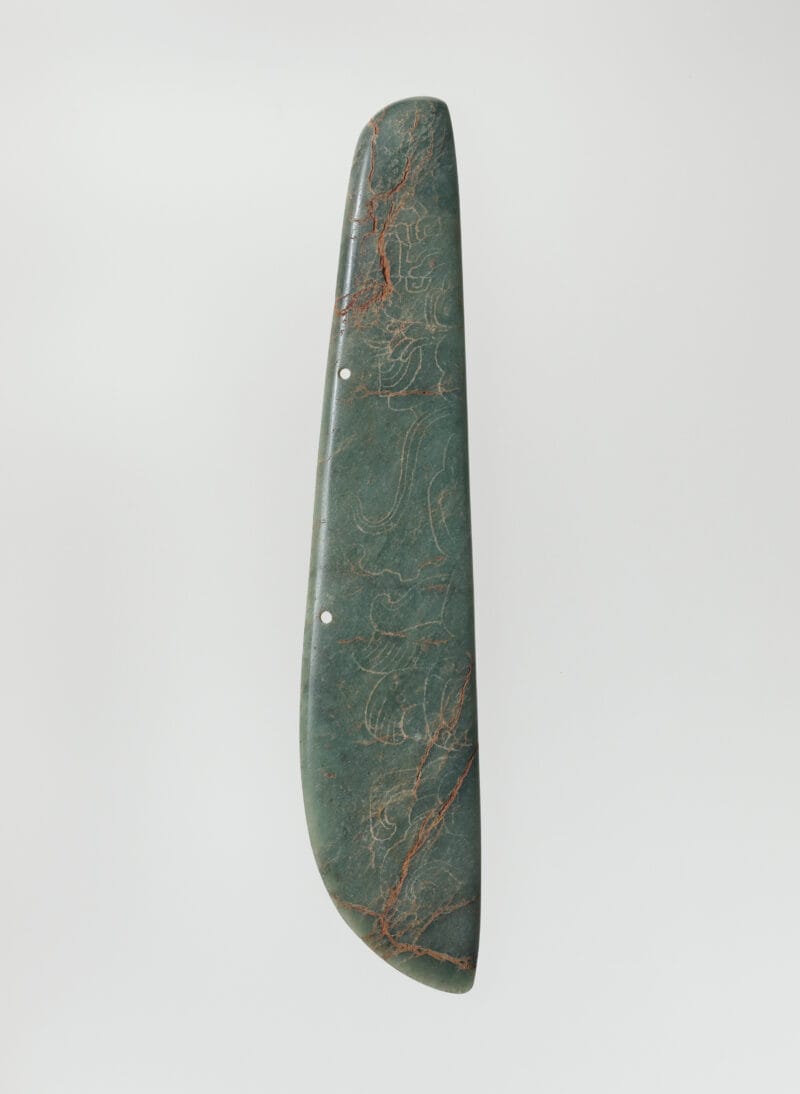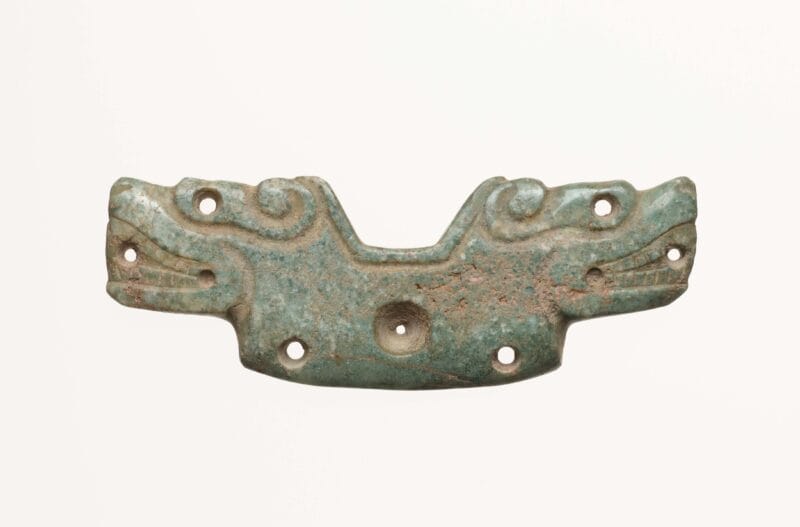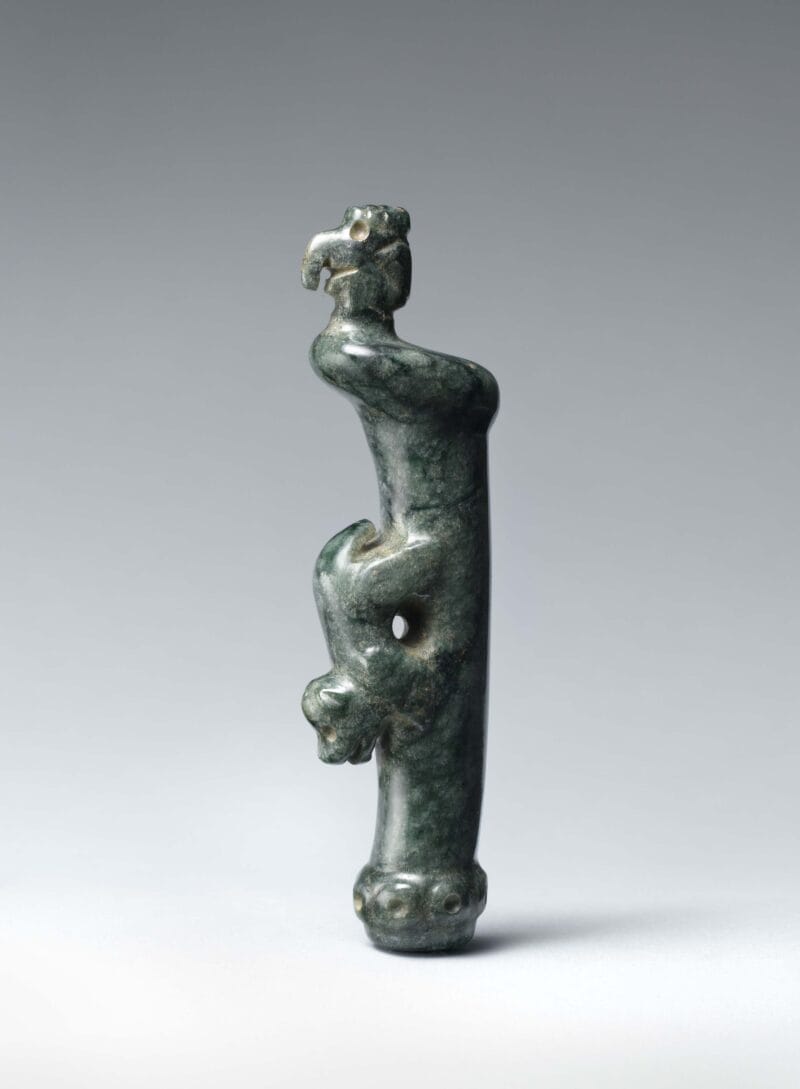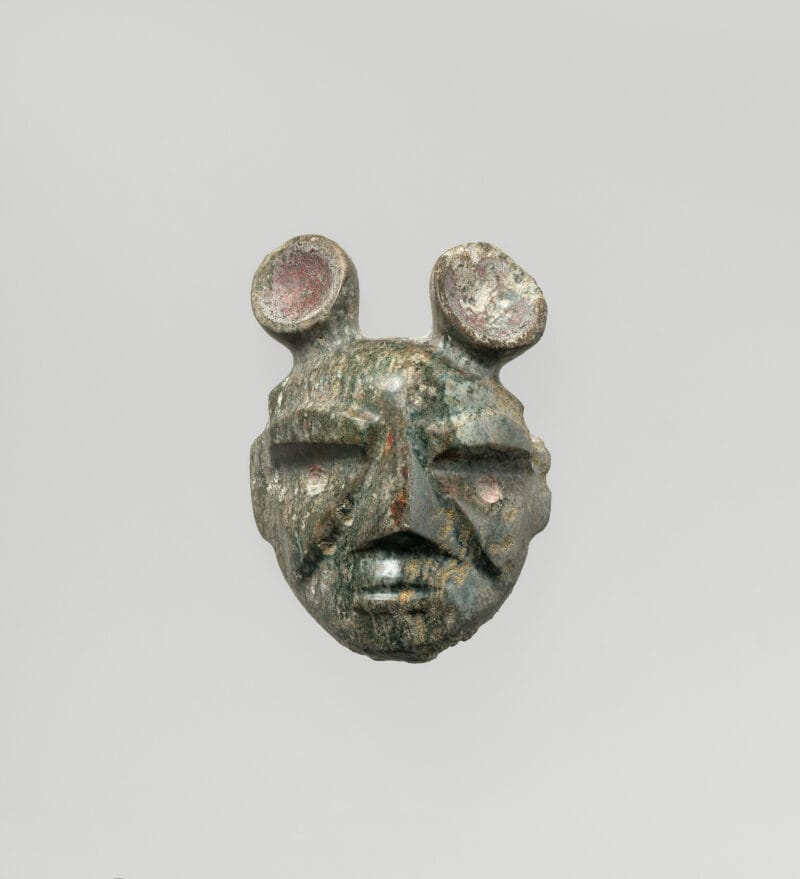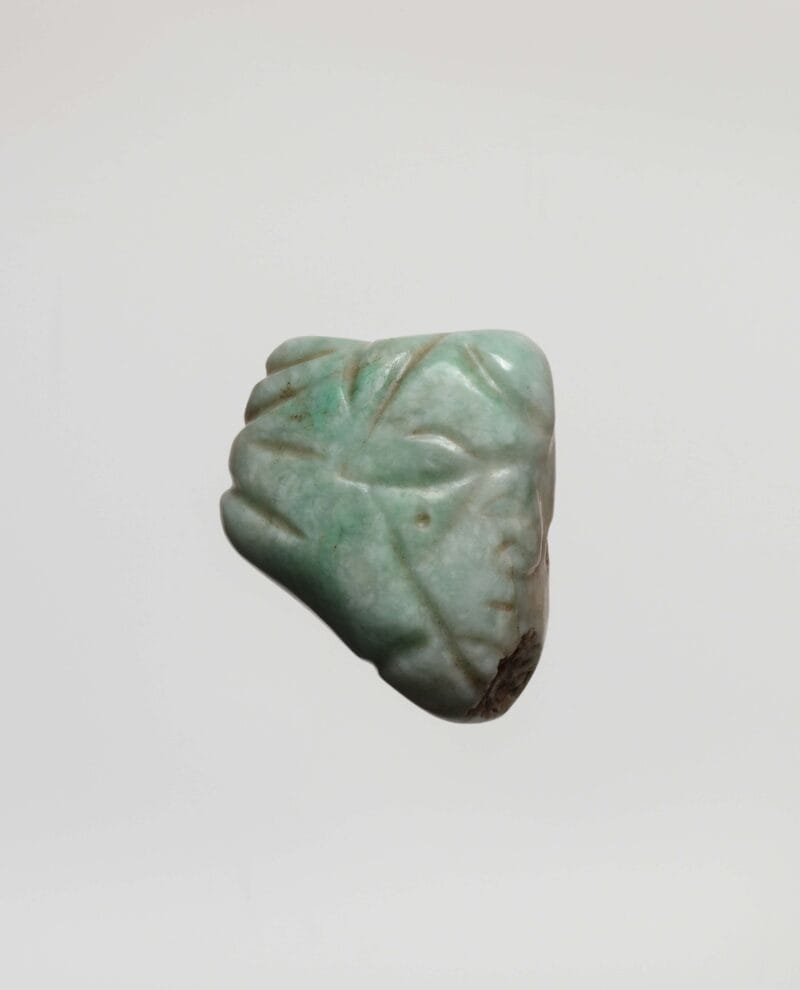
About the Object
Mayan pendants were carved using stone tools and possibly thread. The one seen here was fashioned from an unidentified green stone that may be jade. The carvings reveal abstract human and animal forms. Given the work’s size it was probably used for individual devotion or reverence, while the green hue of the polished stone would be associated with fertility along with maize in particular as well as agriculture more broadly. Finally, the color of the stone would be associated with the cycles of birth and death, seen to provide their possessor with supernatural power and authority.
Additional Information
The ancient Maya occupied the southern part of Mexico and some areas of northern Central America from approximately 2000 BCE–1520 CE. Before their contact with Spanish explorers, the Maya developed complex language and mathematical systems, urban architecture, and rich socioreligious structures—all made possible by expert agricultural and warring activities. The Maya also achieved advanced levels in ceramic and stone production techniques that usually portrayed deities, humans, and animal figures with naturalistic expressions. Additionally, the complex web of Mayan iconography, revealed in these ceramic and stone depictions, displays how influential the earlier Olmec tradition became to the Maya. The Olmec tradition developed in the western part of the main Mayan dominion area, likely impacting the Maya between 1200 and 300 BCE.
[Economos Works of Art, Santa Fe, NM];
The Jan T. and Marica Vilcek Collection, 2002-2010;
Gift to The Vilcek Foundation, 2010;
Related Objects
You may also be interested in
Juan Pablo Contreras composes classical music with the sounds of Mexico

Felipe Baeza

Juan Pablo Contreras

